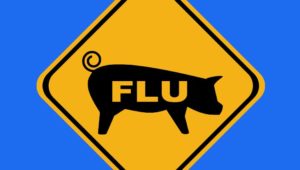[ad_1]
Earlier this month, the number of Covid-19 cases started to rise again in India. Also, in addition to swine flu, well-known diseases such as malaria, dengue and monkeypox are on the rise, putting health officials across the country on alert.
Disease outbreaks are increasing rapidly. Now with minimal travel restrictions, disease transmission is also increasing.
Let’s take a look at the disease outbreaks in India that require awareness, prevention and preventative measures:
-
COVID-19
Kovid-19 or Coronavirus has left the world far behind. Even three years after the global outbreak, it does not seem possible to completely stop it. The SARS-CoV-2 virus causes corona virus disease, which can cause mild to moderate or severe respiratory illness.
Fever, cough, fatigue, sore throat, headache, pain, diarrhea, skin rash and red or itchy eyes are typical symptoms of the coronavirus. Shortness of breath, loss of speech or movement, disorientation and chest discomfort are the worst symptoms of the disease.
-
monkey pox
More than 16,000 cases of monkeypox have been reported. Four cases of monkeypox have also been reported in India, which is of course a cause for concern. The disease is uncommon but can be quite dangerous.
Symptoms include fever, chills, chills, cough, headache, body aches, swollen lymph nodes, fatigue, chills, and rash. Even the World Health Organization has declared monkeypox a global health emergency.
-
tomato fever

Tomato fever is also growing rapidly in India. Image: Shutterstock
Kerala, where three cases of monkeypox have been reported. At the same time, the first case of tomato fever or tomato flu in India was also found in Kerala. A group of children were affected by this condition, which later spread to other countries.
It is also known as hand, foot and mouth disease. This dehydration causes rashes and many other skin problems. Fever and fatigue are other symptoms. The red rash is called tomato fever.
-
Japanese encephalitis
Japanese encephalitis is an infection that mosquitoes can transmit to humans. Brain infection is transmitted from pigs to humans by mosquitoes. The disease often manifests as a severe headache, high fever, fainting, tremors, convulsions and confusion.
Japanese encephalitis cases are increasing daily in Assam, India. It causes death every year during monsoon. It has claimed 38 lives so far in 2022.
-
Dengue
Dengue is one of the mosquito-borne diseases. It is usually seen during the rainy season. It is transmitted by the bite of an infected Aedes aegypti mosquito. There are two forms of dengue: dengue hemorrhagic and common dengue (DHF). Dengue fever is a deadly disease that is similar to the flu. However, DHF is a more severe form of the disease that can be fatal.
High fever, headache, rash, muscle pain and joint discomfort are some of the common symptoms of this disease. The number of dengue cases is increasing day by day in many Indian states. Dengue cases have been reported in Pune, Telangana and Karnataka.
-
swine flu

The seasonal cause of swine flu is the H1N1 virus. Swine flu in most cases causes pneumonia, and in the most severe cases it can be fatal. High temperature, sore throat, dry cough, headache, weakness and fatigue, cold hands and feet, diarrhea-vomiting are some of the symptoms of this disease. Symptoms of swine flu in children begin to appear after ten days. However, in adults, symptoms often do not appear even after seven days have passed. Swine flu infections have increased in many states, especially in Maharashtra.
[ad_2]




Leave a comment